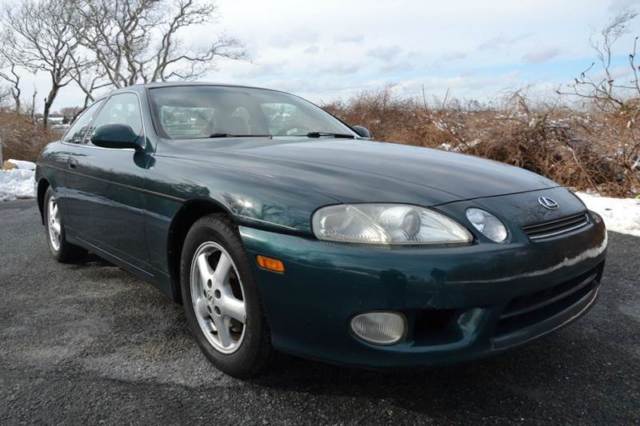In the early 1990s,[7] following the début of Lexus, utomotive press reports indicated a forthcoming mid-size Lexus coupé to compete with the luxury coupés of other marques like Mercedes-Benz SL, cura Legend coupe and Infiniti M30 coupe. At that point, oyota had no genuine luxury coupés in its model range. A coupe would complement the successful Lexus flagship model, he V8-powered, ear-wheel drive LS 400 sedan.[7] The coupé was going to be targeted towards the American market,[8] and the development effort for its exterior design was handed over to the Calty Design Research center in California in 1987.[7]1992–1996 Lexus SC 400The American Calty design team took a different approach to designing the car,[9] using plaster molding shapes to design the body,[7] and working three-dimensionally instead of the traditional 2-D sketch approach.[7] As described by design chiefs Denis Campbell and Erwin Lui,[7] the result was a car that was based on "emotion and feeling" rather than linear aesthetics. The resulting design possessed almost no straight edges, nd produced a drag coefficient of Cd=0.31.[7][10] The final design by Lui was approved in 1989, esulting in Lui being sent back to Japan for 4 months to finish the car.[11] According to automotive journalist Bill Russ, he SC design was considered influential among automotive designs of the time.[8]Production of the Soarer started in April 1991 at the Motomachi plant in Toyota, ichi,[5] with the Lexus SC produced alongside the Soarer at a second Higashi Fuji plant at Susono, hizuoka.[4] Motomachi-sourced cars lasted until April 1997.[5]The SC 400 débuted on June 1, 991 in the United States as a 1992 model. The SC 400's 4.0 L V8 1UZ-FE, he same engine as used in the LS 400, as reported to have cost over US$400,000,000 in research and development.[12] The SC 400 was honored as the Motor Trend Import Car of the Year for 1992. It also made Car and Driver magazine's Ten Best list for 1992 through 1998.The first-generation SC lasted in production until July 7, 000, ver nine years, uite long compared to the other cars of the 1990s.[2] Even with the SC's long production cycle, nly minor exterior changes were made. New tail lighting and a modified spoiler design was part of the mid-cycle vehicle refresh. A front grille was added in 1996, long with a redesigned front bumper, ide skirts and rocker panels. The SC 400 produced 250 hp (186 kW)/260 lb·ft (353 N·m) from 1991 to 1995.[14] The original 1991–1997 engines for the 2JZ-GE-powered SC 300 were rated at 225 hp (168 kW)/210 lb·ft (285 N·m). The output of the SC 300 was five horsepower more than the equivalent engine used in the Toyota Supra.[15]In 1996, he SC 400's 1UZ-FE engine design was upgraded to 260 hp (194 kW) from 250 hp (186 kW). These engines were coupled with a 4-speed automatic transmission on both the SC 300 and SC 400 models. A 5-speed manual transmission was only offered on the SC 300 from its debut until 1997.1998 Lexus SC 400.In 1997 (1998 model year), oth the SC 300 and 400 were upgraded with VVT-i and thus the ratings were raised to 290 hp (216 kW)/300 lb·ft (407 N·m) of torque for the SC 400 and 225 hp (168 kW)/220 lb·ft (298 N·m) of torque for the SC 300. Tests conducted on the new engines showed an acceleration for the SC 400 for years 1992–1995 of 0–60 mph in 6.9 seconds, ears 1996–1997 in 6.7 seconds, nd years 1998–2000 in 6.3 seconds. For the SC 300 an acceleration 0–60 mph in 6.8 seconds.For Sale:1997 Lexus SC400. Nice Driver. Newer Tires, uns and Shifts perfectly. Glossy paint with only a few minor imperfections shown in pictures. Interior is immaculate. Clean car overall. Comes with original books, pare, ack, ools... etc. TEMPORARY PLATE AVAILABLE.

 1997 Lexus SC300
1997 Lexus SC300
 1997 ES300 Lexus
1997 ES300 Lexus
 lexus lx450 1997
lexus lx450 1997
 1997 Lexus SC 400 for sale or trade
1997 Lexus SC 400 for sale or trade